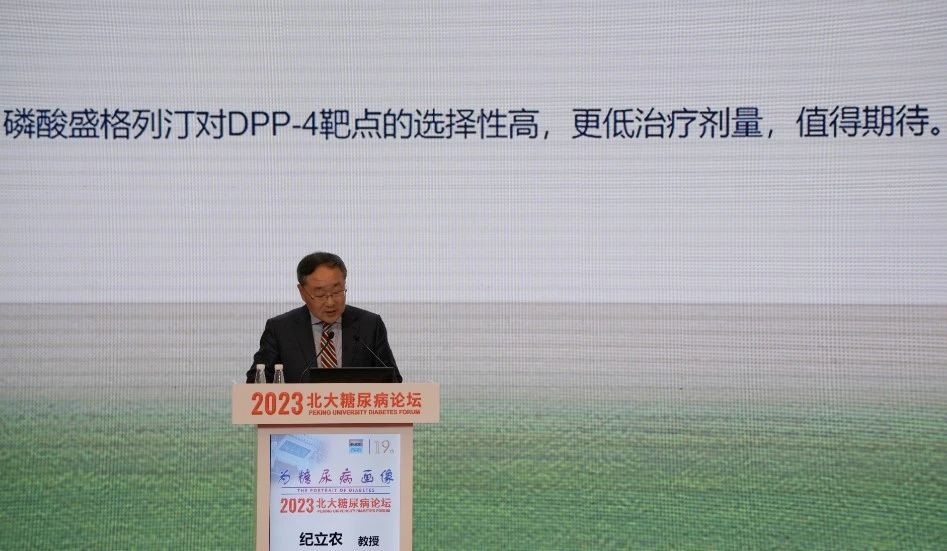World Diabetes Day | Empowering Diabetes Patients Through Innovation at the Source
Release date:
2023-11-16

Clinical results indicate that, compared to existing同类 drugs on the market, this one delivers "double the efficacy with half the dose," positioning it as a potentially top-tier glucose-lowering medication in its class. Even more remarkable is its enhanced safety profile, which effectively addresses the common adverse reactions often seen with currently available products.
Over the past few decades, the incidence of diabetes has continued to rise globally. In China, the prevalence of diabetes among adults has climbed to 11.2%, with the number of patients now reaching 140 million. Although we’ve gained a deep understanding of many aspects of this disease, its underlying mechanisms still hold numerous unanswered questions.
This year's World Diabetes Day slogan is “ Understand the risks, understand the response. — Understanding the risk of developing type 2 diabetes, and ensuring early diagnosis and prompt treatment to reduce the risk of diabetes-related complications.

Professor Ji Linong, Director of the Department of Endocrinology at Peking University People's Hospital, pointed out that type 2 diabetes is a chronic metabolic disease characterized by high heterogeneity in its underlying causes, involving multiple factors such as genetics, environment, and lifestyle. Its incidence is linked to genetic variations, specific biological pathways or mechanisms, as well as environmental factors like obesity.
Therefore, the clinical treatment approach for diabetes has undergone several significant shifts over time. Over the past century since insulin was first introduced into clinical practice, a succession of diabetes medications has emerged: including insulin and its analogs, biguanides, sulfonylureas, meglitinides, alpha-glucosidase inhibitors (AGIs), thiazolidinediones (TZDs), dipeptidyl peptidase-4 inhibitors (DPP-4 inhibitors), sodium-glucose co-transporter 2 inhibitors (SGLT-2 inhibitors), and glucagon-like peptide-1 receptor agonists (GLP-1 receptor agonists)—a total of nine distinct classes of drugs.
Among the nine drug categories listed above, dipeptidyl peptidase-4 inhibitors (DPP-4 inhibitors), a new class of antidiabetic drugs that have recently entered clinical practice, Praised by clinicians as the "smartest blood sugar-lowering drug" due to its mechanism of action aligning perfectly with the body's natural process of regulating blood glucose, its clinical use has been steadily increasing in recent years—and its role in both domestic and international guidelines is becoming increasingly prominent.
DPP-4 inhibitors don’t directly stimulate insulin secretion; instead, they work by inhibiting the breakdown of glucagon-like peptide-1 (GLP-1) in the body. These drugs help elevate levels of both endogenous GLP-1 and glucose-dependent insulinotropic polypeptide (GIP), improving dysfunctional pancreatic beta-cell function. Additionally, DPP-4 inhibitors suppress glucagon release from pancreatic alpha cells, thereby promoting insulin secretion in a glucose-concentration-dependent manner—resulting in effective blood sugar reduction while minimizing the risk of hypoglycemia and avoiding significant weight gain. As a once-daily oral medication, they also offer excellent convenience and patient adherence.
Over the next three years, the global market for DPP-4 inhibitors is expected to reach $19.2 billion, while the domestic market in China will surpass 30 billion RMB. Therefore, DPP-4 inhibitors have become a hotly contested area for major pharmaceutical companies, with the domestic market experiencing rapid growth.
Shengshi Taikе's newly developed, next-generation, highly selective DPP-4 inhibitor—Senglitin (formerly known as Shenglitin) Clinical results indicate that, compared to existing同类 drugs on the market, this one delivers "double the efficacy with half the dose," positioning it as a potentially top-tier glucose-lowering medication in its class. Even more remarkable is its enhanced safety profile, which effectively addresses the common adverse reactions often seen with currently available products.
Currently, common adverse reactions among DPP-4 inhibitors already on the market include nasopharyngitis, headaches, and upper respiratory tract infections. In contrast, senglitin, at the 100mg dose group (high-dose group) during the final 28 weeks, showed significant improvements in addressing these issues compared to the placebo group. Publicly available clinical data reveal that adverse reaction rates—such as nasopharyngitis and headaches—ranged from 4% to 7% across all marketed products. Sengliptin did not report a single case of the aforementioned adverse reaction. ; Regarding adverse reactions from upper respiratory tract infections, all marketed products have shown incidence rates ranging from 3% to 8%, whereas Sengliptin showed an incidence of less than 0.5%, with adverse reaction rates similar to those observed in the placebo group.

At the root of it all lies Sengledin's "original innovation." The company's newly designed senglitin molecule, developed on an integrated drug discovery platform, boasts enhanced selectivity and superior specificity. Therefore, it demonstrated the most reassuring safety profile for patients in clinical trials.
Shengshi Taikе truly leverages "original innovation" to address unmet clinical needs, bringing "lasting" happiness to people across the board.
